|
BOTTICELLI - TEMPTATIONS OF CHRIST
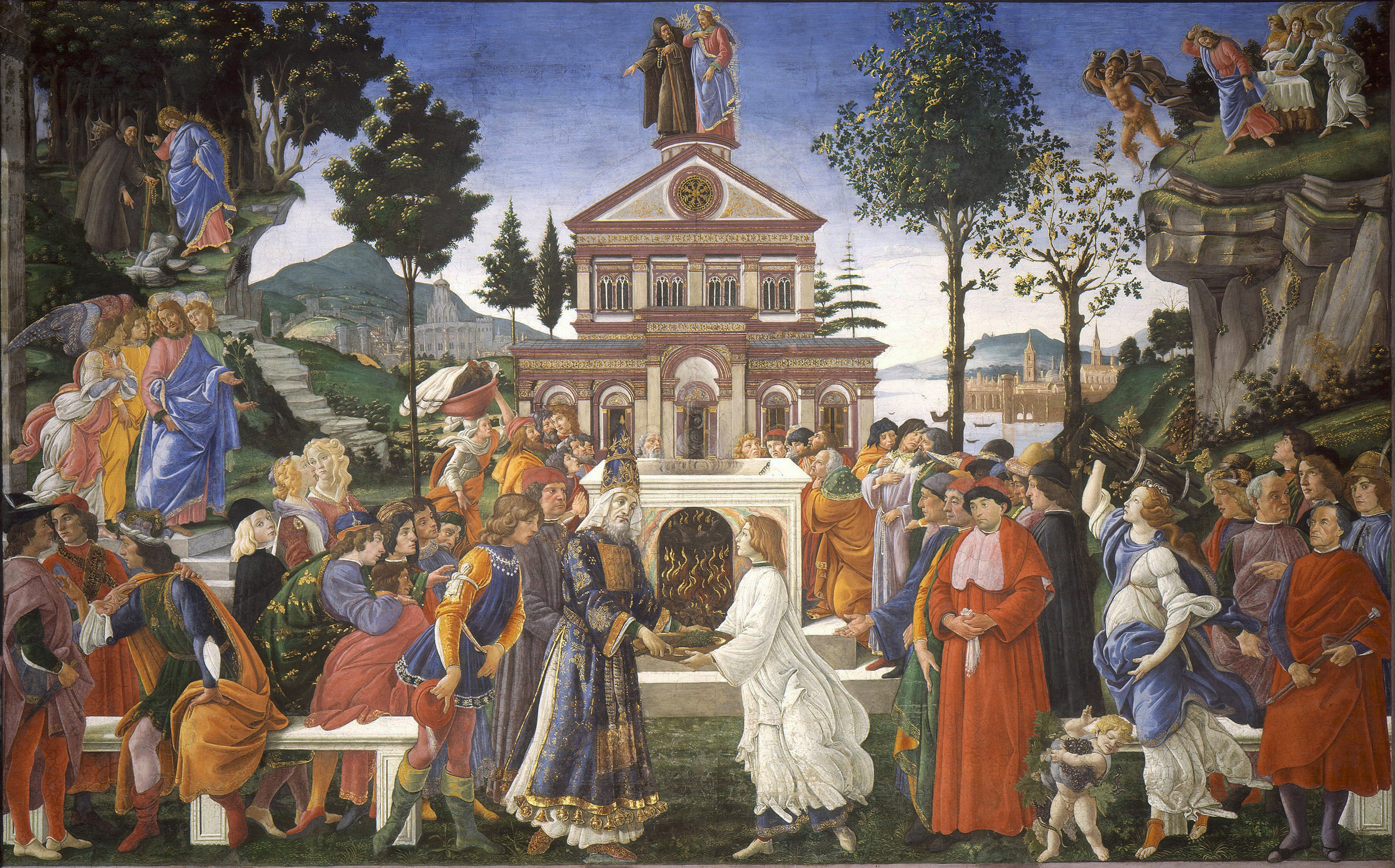
Sandro Botticelli, Public domain, via Wikimedia Commons
1481–1482
|
- Botticelli's trial fresco for the
Vatican's
Sistine Chapel project in 1481 was created to show
off his skills to Pope Sixtus IV.
- His skills were requested by Pope Sixtus and Lorenzo de’Medici in a joint effort of reconciliation.
- The four trial paintings done by
the artists Botticelli, Perugino, Ghirlandaio and Rosselli were used to determine their pay.
- Painting began in October 1481 and was completed by March 1482.
|
In the Sistine chapel, the wall to the left of
Michelangelo’s “The Last Judgement” contains Old
Testament frescoes, namely stories within the
narrative of Moses. To show a relationship between the
Old Testament and the New, the opposite wall has
stories from the narrative of Christ that parallel the
respective stories of Moses.
(lifeofjesus2012.wordpress.com)
|
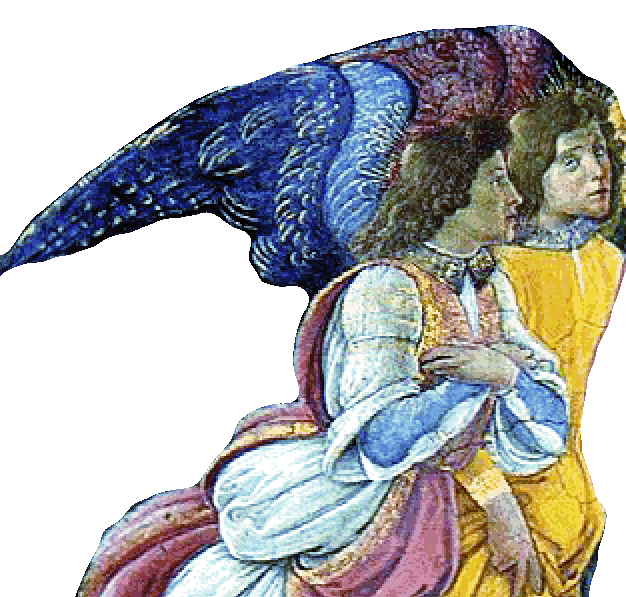
Finished very quickly |
- This short time indicated that the original 16 commissioned frescos were finished very quickly.
- The efficiency was due to the help of other painters working under the masters as the projects moved to completion.
- Fresco (Pigment and Water on Fresh Plaster).
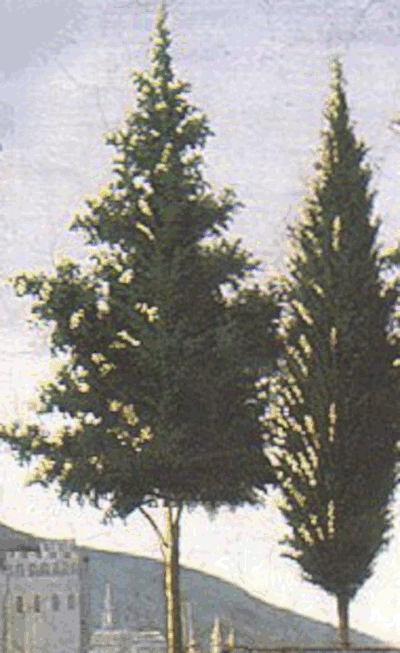
Landscape line |
- Botticelli painted three major frescos in the Sistine Chapel: The
Temptation of Moses and The Punishment of Korah were on the South wall and the
Temptation of Christ on the North wall.
- This was some
27 years before Michelangelo began his work on the ceiling.
|
The images always followed the same pattern. The main part of the biblical story or theme was portrayed in the front or foreground of the picture and in the middle and background parts of the picture there were additional scenes that related to the subject. The background was especially evident on the sides of the frescos so the next picture in the sequence could appear as a continuation of the landscape line.
(historylink101.com)
|
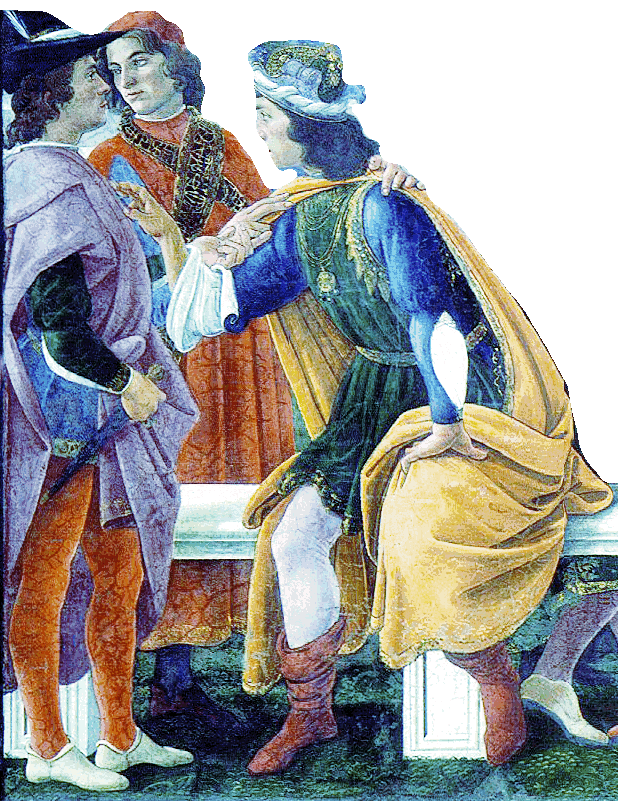
Civil powers in Rome |
- The painting was based on a specific theme proposed by the commissioners having to do with the similarities between the stories of Christ and of Moses.
- It emphasized the old laws and the new law put forward by Christ, all of which also demonstrated the connection between the New and Old Testaments.
- This theme echoed the idea of reconciling the Vatican and civil powers in Rome.
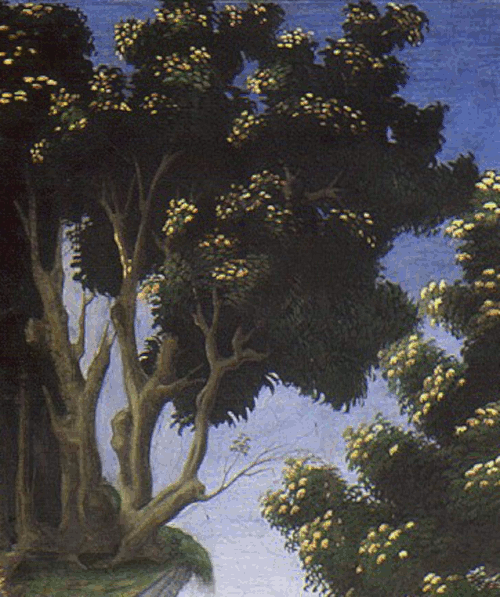
Wilderness |
- Botticelli’s depiction of the
temptations is directly across from the fresco of the Trials of Moses.
- This suggests a direct relationship with Jesus and Moses.
- Moses is tempted by the trials which he faces in the Exodus and during his time with the Israelites in the wilderness; due to his sin he falls short.
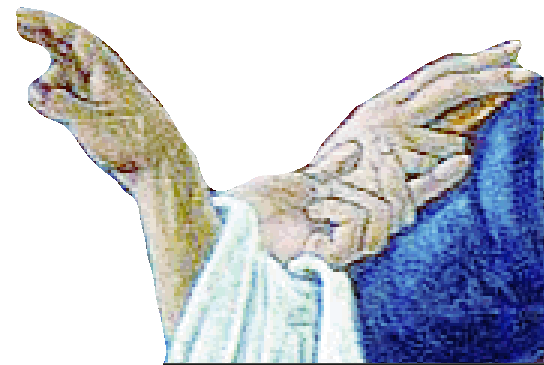
Resists temptation |
- On the other hand, Jesus, the perfect fulfillment of Moses as the caregiver of God’s people, resists temptation
every single time he faces it.
- The three temptations of
Christ were attempts by Satan to tempt Jesus to sin.
- These temptations are described in the Gospels of Matthew and Luke,
although in a different order in Luke.
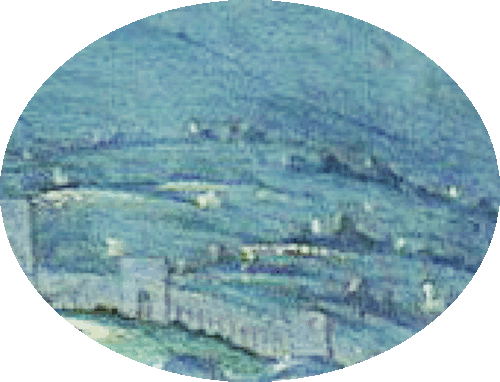
Lush landscape |
- In the foreground of the fresco, Jesus is portrayed being tempted by various worldly offerings symbolized through groups of people and activities around an altar.
- The middle ground is dominated by a splendid classical structure, drawing the viewer’s eye towards intricate architectural details.
- The background showcases lush landscapes, including trees
and distant mountains, contributing to the depth and
complexity of the scene.
|
Botticelli’s use of space, composition, and color in the artwork enhances the dramatic and spiritual narrative, making it a profound religious painting of its time.
(artchive.com)
|
|
Pope Sixtus IV Version of Three Temptations |
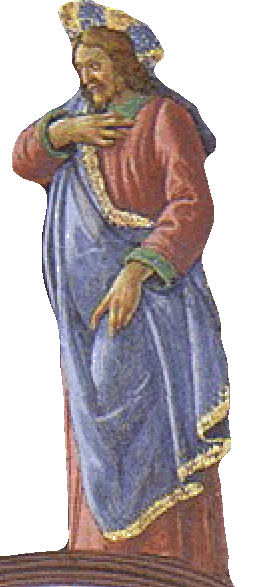
Jesus was baptized |
- Jesus was baptized in the Jordan River by John the Baptist.
- After this, He headed into the uninhabited regions near Judea.
- During this time He fasted for a total of
40 days.
|
Now when all the people were baptized, and when Jesus also had been baptized and was praying, the heavens were opened, and the Holy Spirit descended on him in bodily form, like a dove; and a voice came from heaven, "You are my beloved Son; with you I am well pleased."
Jesus, when he began his ministry, was about thirty
years of age, being the son (as was supposed) of
Joseph, the son of Heli.
(Luke 3:21–22)
|
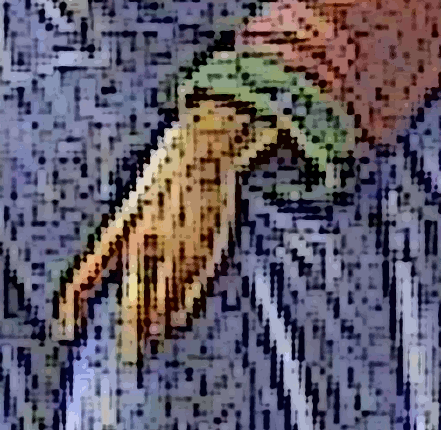
Father's kingdom |
- Jesus's refusal of the temptations showed his commitment to his Father's will and his refusal to bow down to Satan.
- The temptations were attempts to deceive and corrupt Jesus's thinking, wishing, and feeling.
|
for forty days, being tempted by the Devil. And he ate nothing during those days. And when they were ended, he was hungry.
(Luke 4:2)
|
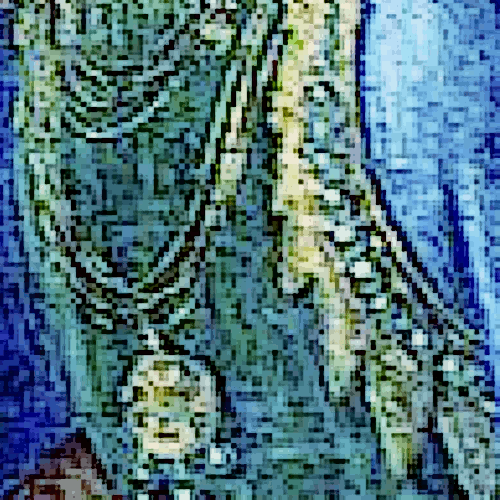
Hedonism, egoism, and materialism |
- The temptations were attempts to make Jesus give in to hedonism, egoism, and materialism.
- Jesus's refusal of the temptations made him stronger and more prepared for his ministry.
|
For he will command his angels concerning you to guard you in all your ways; they will lift you up in their hands, so that you will not strike your foot against a stone.
(Psalm 91:11-12)
|
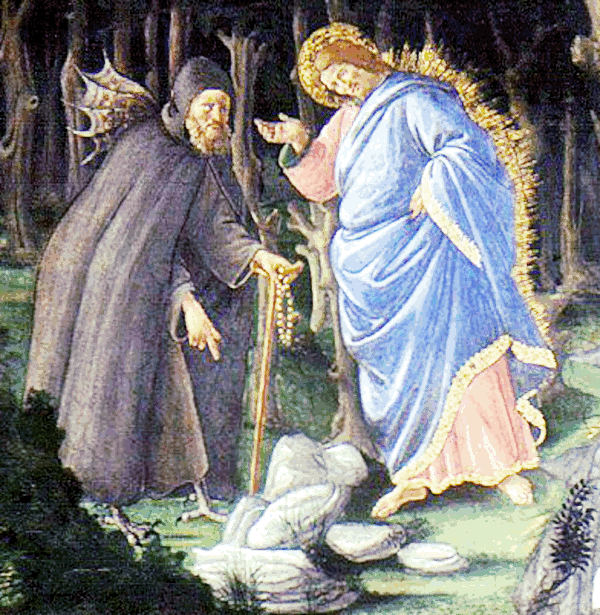
Temptation 1 |
- At the top left of panel, Satan, in the guise of a hermit, tempted Jesus in the Judaean Desert after Jesus fasted for 40 days and nights.
- The
Devil wears clerical garb and disguises himself with a beard and holds a rosary and
a pilgrim’s staff in his left hand.
-
However, we can still recognize the Devil despite his
costume, by the wings of a bat and
the feet of a vulture.
-
Pope Sixtus IV, a Franciscan, was willing to allow the fresco
to send the message that not everyone wearing religious garb is worthy of it.
|
Then Jesus was led by the Spirit into the wilderness
to be tempted by the Devil. After fasting forty days
and forty nights, he was hungry. The tempter came to
him and said, “If you are the Son of God, tell these
stones to become bread.”
(Matthew 4:1-3)
|
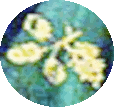
Oak |
- Both
Christ and the Devil stand in front of a forest of oak trees,
instead of the desert like portrayed in scripture.
- This
is because the oak was the symbol of the Della Rovere family to which Pope Sixtus IV belonged.
|
Jesus answered, “It is written: ‘Man shall not live on bread alone, but on every word that comes from the mouth of God.'
(Matthew 4:4)
|
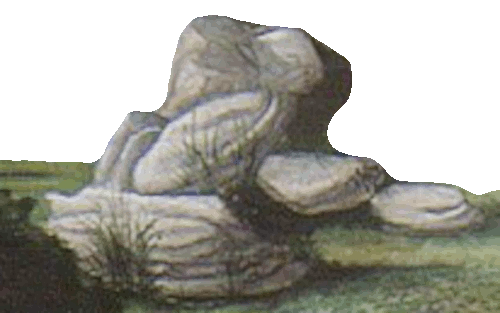
Turn stones into bread |
-
Jesus was tempted to use his supernatural power to provide for his needs.
- The first temptation concerns the body, the lust of the flesh.
- Our Lord is hungry, and the Devil tempts Him to convert
stones into bread.
- The Devil, dressed as a monk, tried to convince Jesus to
reconfigure the stones to prove that he was the true Son of God.
|
He humbled you and let you hunger and fed you with manna, which you did not know, nor did your fathers know, that he might make you know that man does not live by bread alone, but man lives by every word that comes from the mouth of the Lord.
(Deuteronomy 8:3)
|
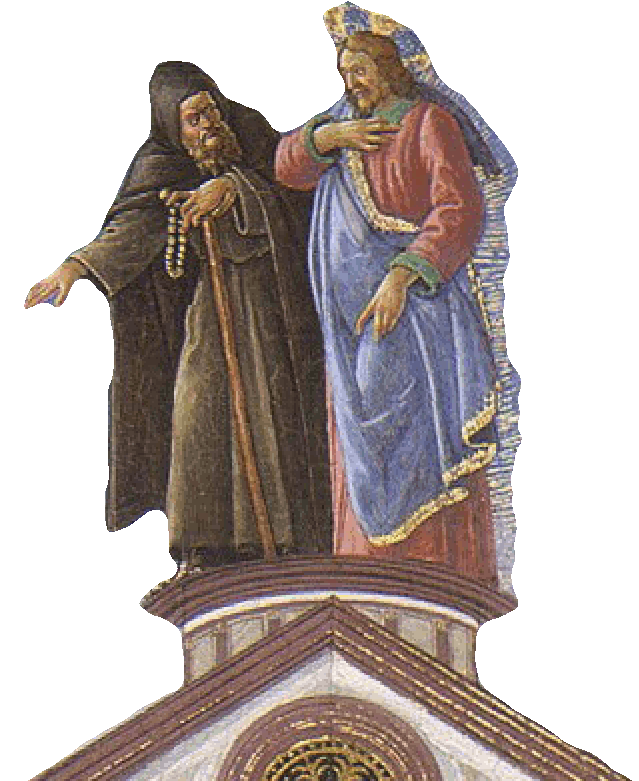
Temptation 2 |
- The upper center panel depicts the two
figures struggling on a pedestal on top of a temple.
-
They are high above the building where the Devil, again disguised as a monk
carrying rosary beads, tempts
Jesus to cast himself down to prove his divinity.
- The
Devil asks Jesus to jump from the top of the Temple as angels will catch him anyway.
- He tempts Jesus to challenge God’s promise that he will be
protected by angels, by throwing himself down.
|
Then the Devil took him to the holy city and had him stand on the highest point of the temple. “If you are the Son of God,” he said, “throw yourself down. For it is written:
“‘He will command his angels concerning you,
and they will lift you up in their hands,
so that you will not strike your foot against a stone.
(Matthew 4:5-6)
|

Not a Temple, but a Church |
- Another clear deviation from the Biblical story is the depiction of the Temple.
-The Devil has carried Jesus to the top of the Temple of Jerusalem, represented by the façade of the Chapel of Santa Maria in Traspontina of the Church of Santo Spirito in Sassia in Rome.
- The Temple is based on an actual building built in Rome by
Sixtus IV, the Santo Spirito Hospital, which is still
present but much expanded.
- It serves both as the backdrop to the scene in the middle foreground, where it is supposed to represent the Church, and the scene on the top middle, where it should represent the Temple.
|
Both the Old Testament and current figures are
builders, and the building in the middle of the
picture could represent one of the architectural
renovations of Pope Sixtus.
(lifeofjesus2012.wordpress.com)
|
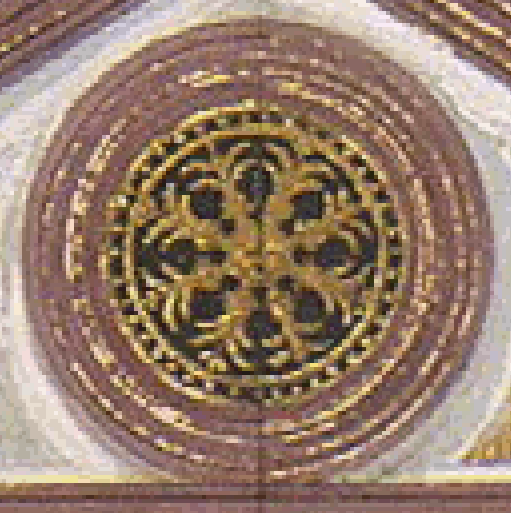
Flaunting his power |
- Jesus was tempted to use his power to flaunt his
heavenly strength and question God's love.
- This second temptation was of the mind and concerns the pride of life,
but Jesus knows that it is wrong for Him to abuse His own powers.
-
The top window in the Temple refers to the Virgin Mary, who, according to contemporary beliefs, would save people from being seduced by the
Devil.
|
Jesus answered him, “It is also written: ‘Do not put the Lord your God to the test.'
(Matthew 4:7)
|
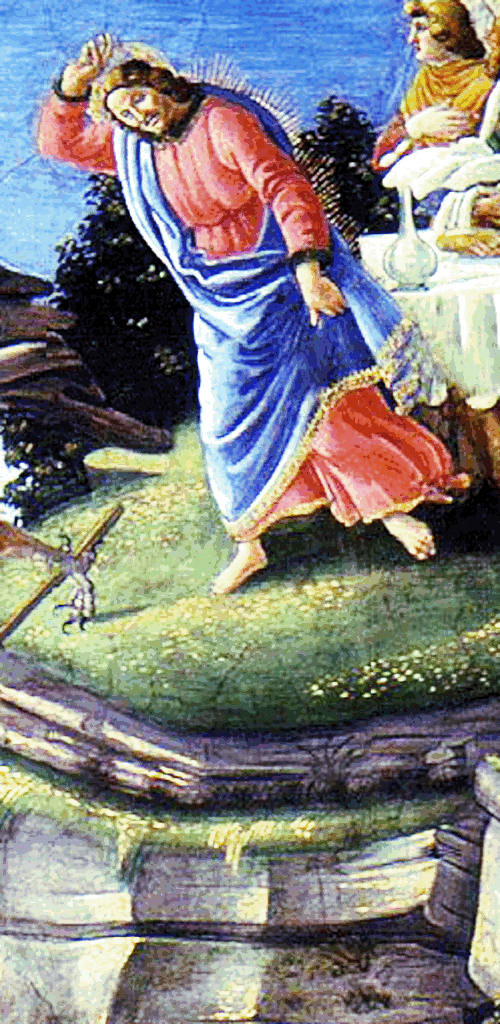
Temptation 3 |
- The last temptation, on the far
right, was when the Devil shows Jesus all the kingdoms of the
world from the top of a high mountain and all the beauty of the Earth.
- The Devil promises Jesus power over this domain, if he
will deny God and bow down to the Devil.
- He promised Jesus all
his kingdoms, but instead, Christ
cast him down into the depths.
|
Again, the Devil took him to a very high mountain and showed him all the kingdoms of the world and their splendor. “All this I will give you,” he said, “if you will bow down and worship me.”
(Matthew 4:8-9)
|
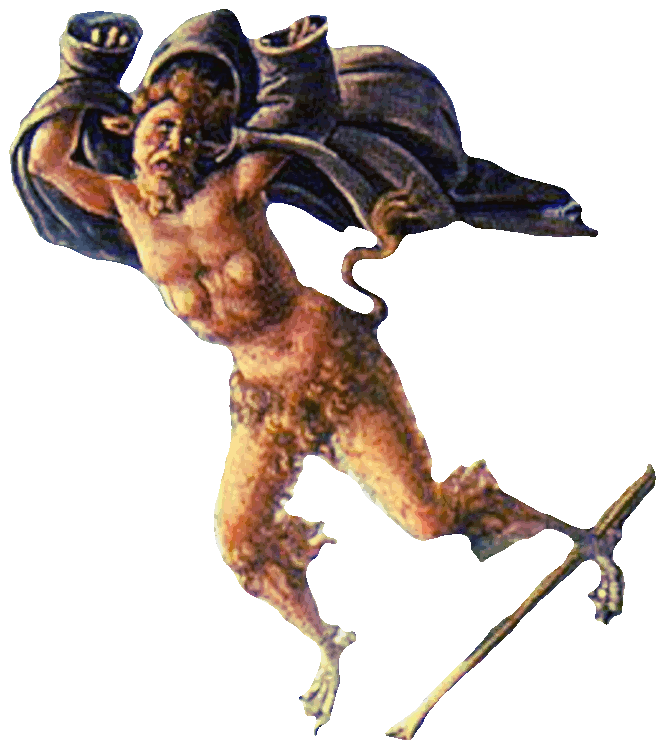
Satan being overthrown from a high rocky place |
- After Jesus refused all three temptations, the
Devil
drops his disguise and falls from the mountain.
-
Jesus was tempted to give in to evil and gain political power.
- This third
temptation was of the heart and concerns the lust of the eyes, bypassing the passion and crucifixion.
- Christ drives away the Devil, who ultimately reveals his true
Devilish form.
|
Jesus said to him, “Away from me,
Satan! For it is written: ‘Worship the Lord your God,
and serve him only.’
(Matthew 4:10)
|
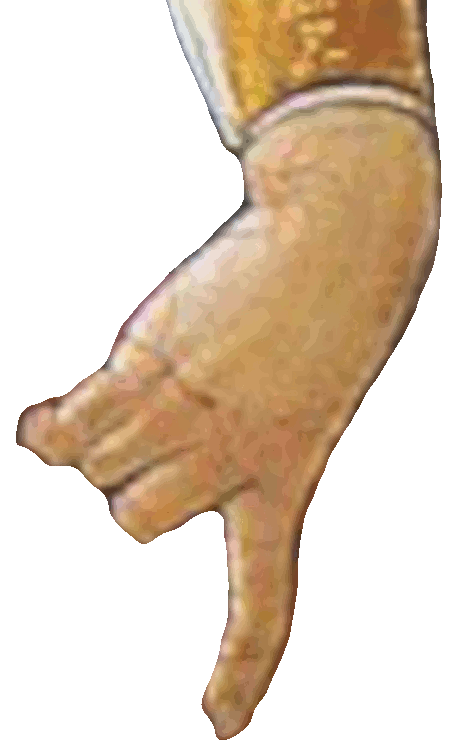
Gesture by Christ |
- Botticelli departs from the Gospel account also in having the
Devil’s true identity mostly hidden.
- A gesture by Christ drives the Devil off the side of the mountain as his cloak flies off, and we see him in all his ugliness, with a tail and talons for toes.
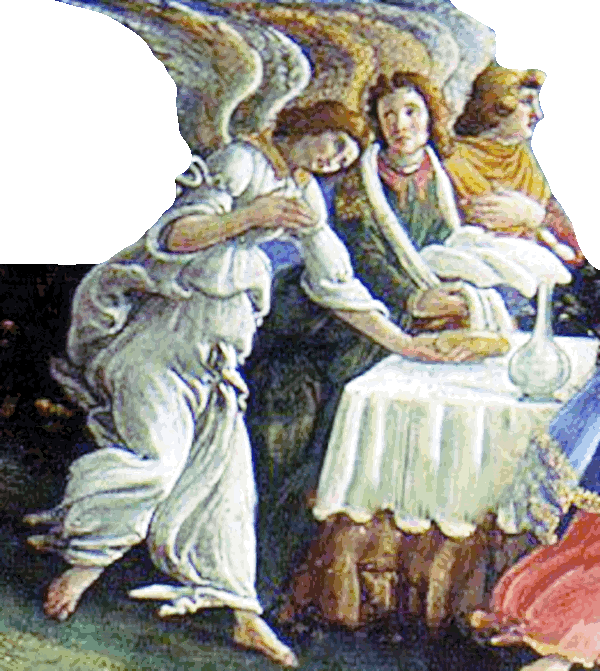
Celebration of the Eucharist |
-
In the background on the top right, three angels have prepared a table for the celebration of the Eucharist.
- The angels come to
help Jesus and have prepared a table with wine and bread which refers to the Last Supper.
- Christ, the one true God, resists all temptations and evil loses every time.
|
Then the Devil left him, and angels came and attended him.
(Matthew 4:11)
|
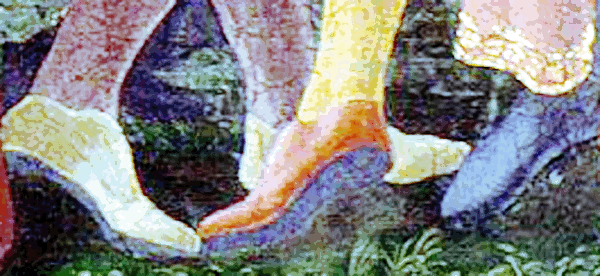
Bottom |
- So far the scenes match the fresco’s title and is clear enough
they are temptations, but it’s only the top third of the fresco
we see them.
- The most dominant scene is lower down, with the temple from which the
Devil tempted Jesus standing tall as a backdrop for the events in the foreground.
-
The bottom scene involves about 50 of the 60 characters in the entire fresco
and Christ does not appear here, at least not at the
same mature age.
- There is no obvious connection between
what is going on in the bottom of the fresco and the temptations above.
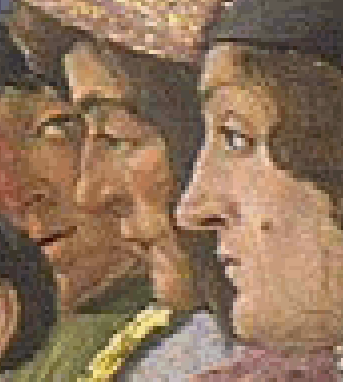
Multicultural |
- Botticelli did not mind leaving his viewers with something to puzzle over.
- It’s also a multicultural puzzle, for the dress of the central figures seems to be drawn from various times and places.
- Some figures
in the crowd are representations of members of the Pope’s
family.
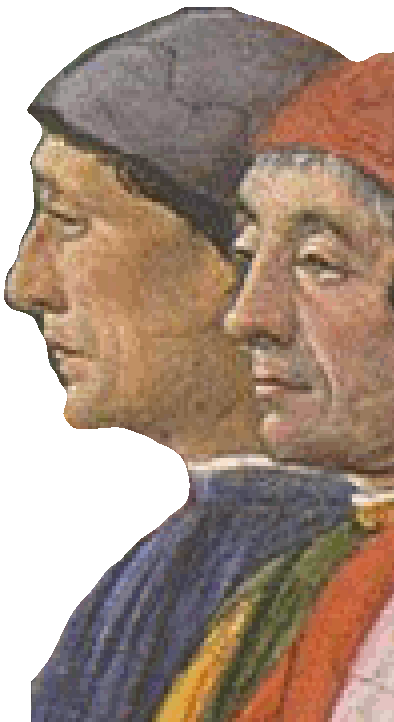
Medici family |
- Familiar looking members of the Florentine Medici family
who were significant art patrons.
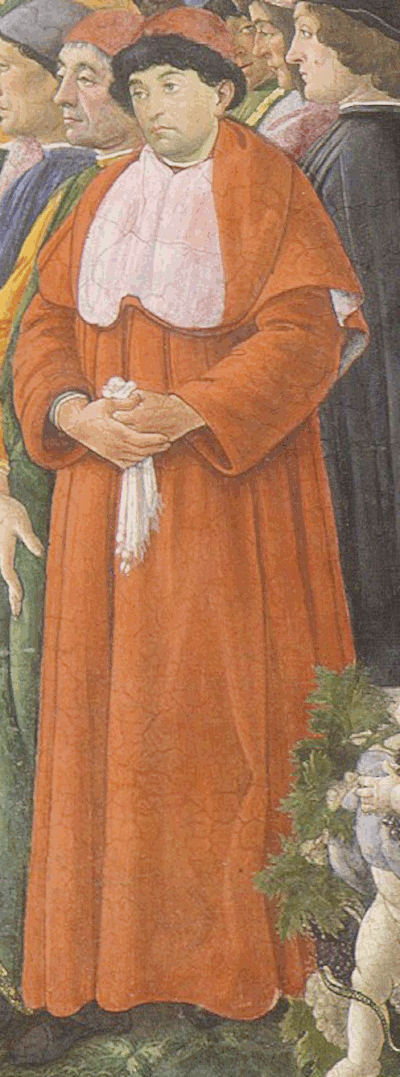
Medici family pope |
- In 1513, Giovanni de' Medici was raised to the papacy as
Pope Leo X.
- His ascension to the highest echelon of the
Catholic Church marked a moment of unparalleled influence for
the family and his remarkable achievements even surpassed his
father Lorenzo de' Medici's successes.
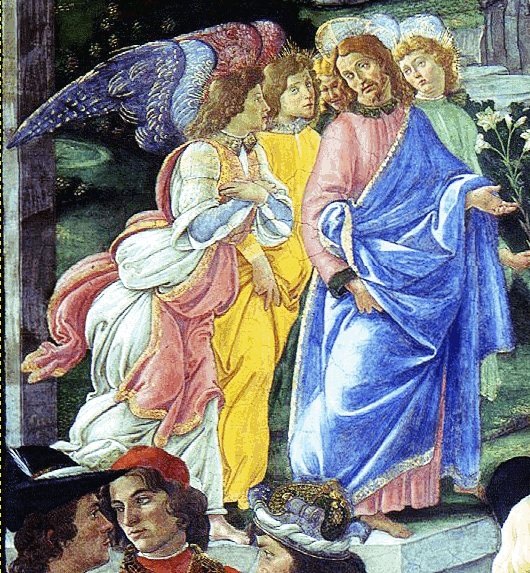
Jesus explaining Jewish ritual |
- In addition to his three appearances
with the Devil, Christ appears in the painting a fourth time.
- In the middle left panel, he seems to explain to the three (or four) angels behind him the ritual that is going on in the fifth scene in the foreground of this painting.
-
The unity of these events is clarified by the reappearance of Christ where He is apparently explaining the incident to the heavenly messengers.
- The Angel with the green robe holds a lily and
represents the Archangel Gabriel.
|
He and the angels are in a register above the central scene, and it appears that he is here commenting to the angels about the events below. Thus, I infer, Christ is considering the nature of the Jewish sacrifice and how it is different from that of the Christians.
(getreadyforrome.com)
|
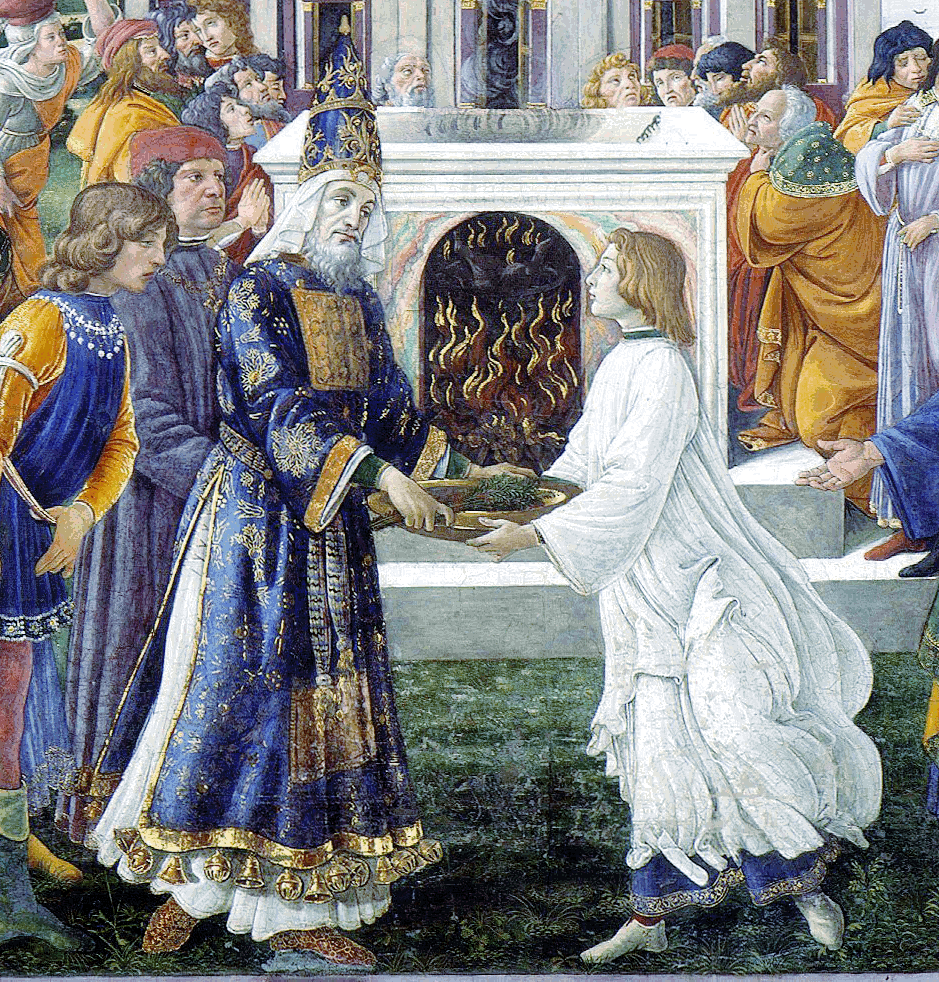
Purification at the altar |
- In the foreground, central scene, a large group of people
are gathered around an altar that stands in front of the Temple.
- The High Priest on the left and a young man dressed in white on the right
stand in front of the altar.
-
The young man whom Jesus has healed of leprosy presents himself to the High Priest at the temple, so that he may be pronounced clean.
- He carries a basin of water, in which is a bough of hyssop.
|
While it is not entirely clear what this scene
represents (even Vasari did not know), it seems likely
that they are engaged in a blood offering ritual. The
High Priest dips a myrtle branch into a bowl filled
with blood. It is not unlikely that the young man with
the bowl represents Jesus, in the role of a priest, as
all frescos on the North, South, and East wall of the
Sistine Chapel depict Moses or Jesus in the central
scene.
(tripimprover.com)
|
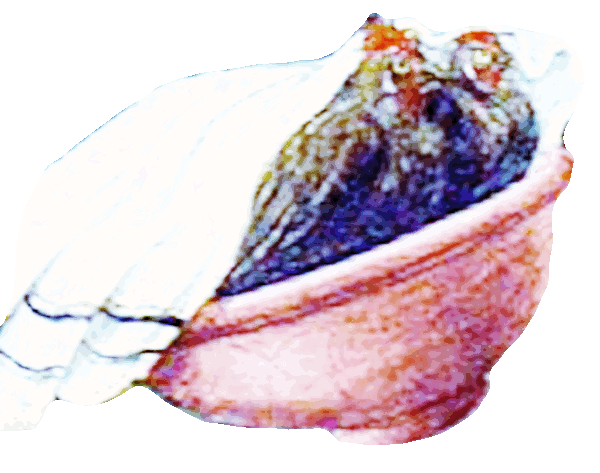
Sacrifice |
- To the left of the altar is a woman with a basket with two cocks or hens on top of her head, which are to be sacrificed.
|
When he came down from the mountain, great
crowds followed him. And behold, a leper came to him
and knelt before him, saying, “Lord, if you will, you
can make me clean.” And Jesus stretched out his hand
and touched him, saying, “I will; be clean.” And
immediately his leprosy was cleansed. And Jesus said
to him, “See that you say nothing to anyone, but go,
show yourself to the priest and offer the gift that
Moses commanded, for a proof to them.” When he had
entered Capernaum, a centurion came forward to him,
appealing to him.
(Matthew 8:1-34)
|
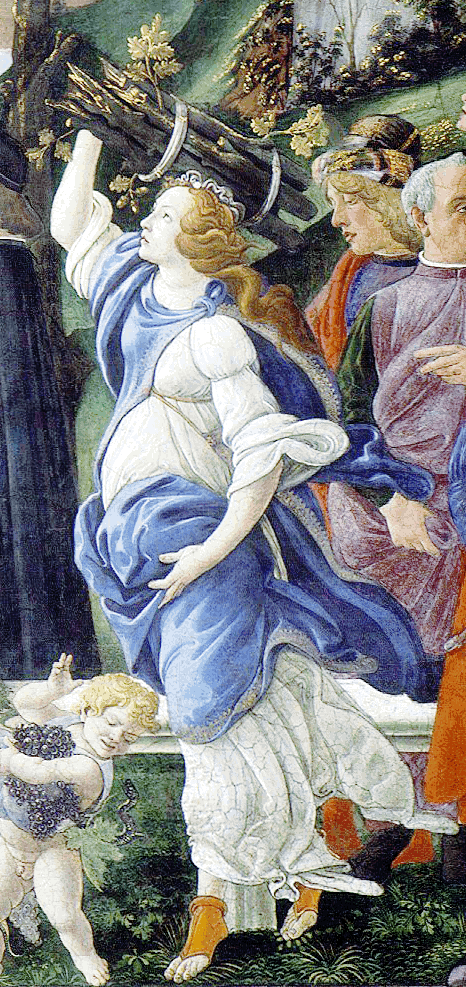
Woman brings cedar wood |
- Another woman to the right brings cedar wood.
- These
three ingredients, cedar, cocks and hens, along with the hyssop purification water, were part of the ritual of cleansing of a leper.
|
Jesus reached out his hand and touched the man. “I am willing,” he said. “Be clean!” Immediately he was cleansed of his leprosy.
(Matthew 8:3)
|
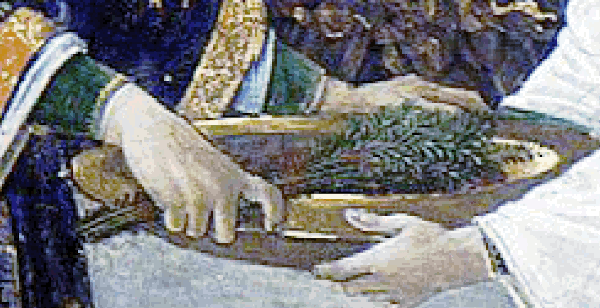
Sacrificial bowl |
- This is the celebration of a Jewish sacrifice, conducted daily before the Temple in accordance with ancient custom.
- The hyssop water is mixed with the animal blood.
-
The high priest is receiving the blood-filled sacrificial
bowl.
|
The inclusion of this Jewish sacrificial scene in the Christ cycle would appear extremely puzzling; however, its explanation may be found in the typological interpretaion. The Jewish sacrifice portrayed here refers to the crucifixion of Christ, who through His death offered up His flesh and blood for the redemption of mankind. Christ's sacrifice is reconstructed in the celebration of the Eucharist, alluded to here by the gift table prepared by the angels.
(Barbara Deimling. Taschen)
|
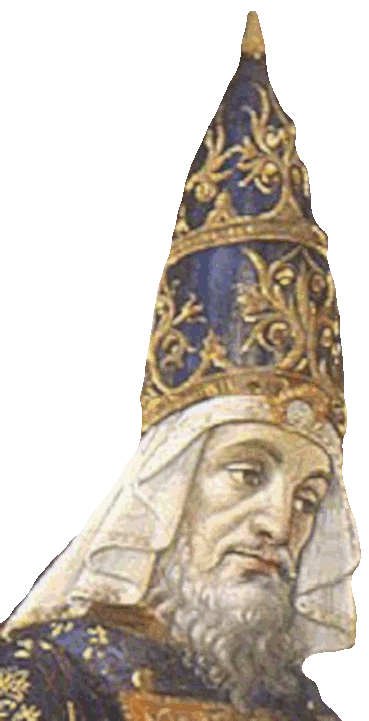
High priest |
- The high priest may symbolize Moses, who transmitted the Law.
- While the young man may symbolically represent Christ, who, according to the Gospels, was wounded and slain for the benefit of mankind, and healed through the Resurrection so that mankind might also be made spiritually clean, and receive salvation.
|
From the blue, purple and scarlet yarn they made woven garments for ministering in the sanctuary. They also made sacred garments for Aaron, as the Lord commanded Moses.
They made the ephod of gold, and of blue, purple and
scarlet yarn, and of finely twisted linen.
(Exodus 39:1-2)
|
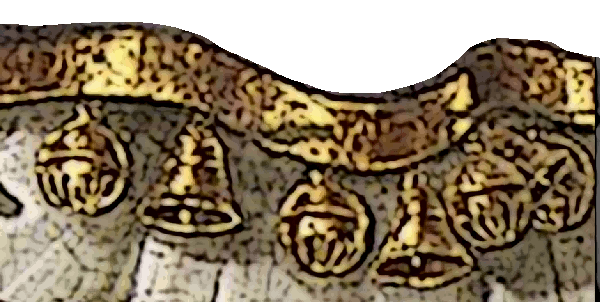
Bells and pomegranates |
- And they made bells of pure gold and attached them around the hem between the pomegranates.
- The bells and pomegranates alternated around the hem of the robe to be worn for ministering, as the Lord commanded Moses.
- For Aaron and his sons, they made tunics of fine linen—the work of a weaver
and the turban of fine linen, the linen caps and the
undergarments of finely twisted linen.
- This is elaborate priestly garment that God commanded Moses to make for Aaron
and Botticelli appears to have reproduced it here.
|
They also made bells of pure gold, and put the bells between the pomegranates all around the hem of the robe, between the pomegranates— a bell and a pomegranate, a bell and a pomegranate around the hem of the robe for ministering, as the Lord had commanded Moses.
They also made the coats, woven of fine linen, for Aaron and his sons, and the turban of fine linen, and the caps of fine linen, and the linen undergarments of fine twined linen.
(Exodus 39:25-28)
|
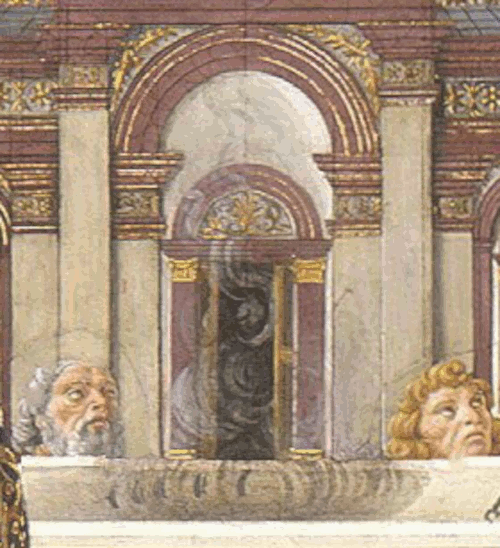
Old Testament altar |
The altar is not a Christian altar, which would be inside of a church, but an altar on which offerings could be burned, as they were in the Old Testament.
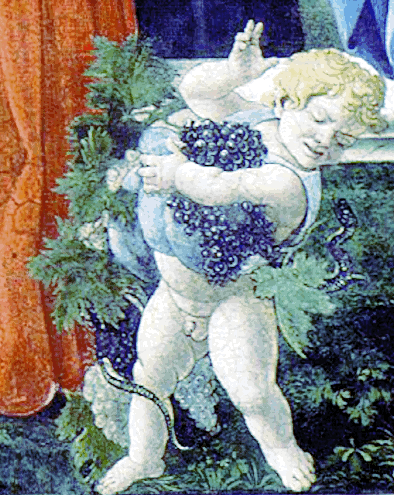
Grapes |
-
The key element of the Christian sacrifice is, of course, Christ himself, who died on the cross to save mankind from the full effects of its sins.
- This suggestion may receive some support from the fact
that in the lower right foreground is a baby holding a bunch
of grapes and stepping on a serpent.
- Christ is the mortal
enemy of the serpent and best defense against the temptation
he represents.
|
If the grapes are to remind of the communion wine that is or stands for the blood drawn by Christ’s sacrifice, then we have a further reminder that in Christianity, it is God and His son who make the supreme sacrifice.
(getreadyforrome.com)
|
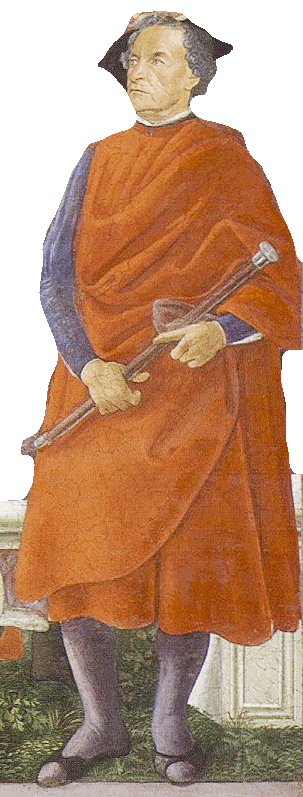
Roman Catholic Cardinal |
- The conspicuous presence of the Roman Catholic Cardinal would also indicate that the Christian alternative is kept in mind at this Jewish service.
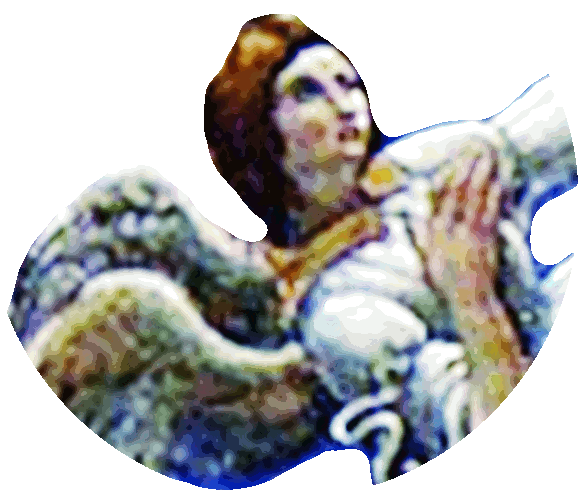 |
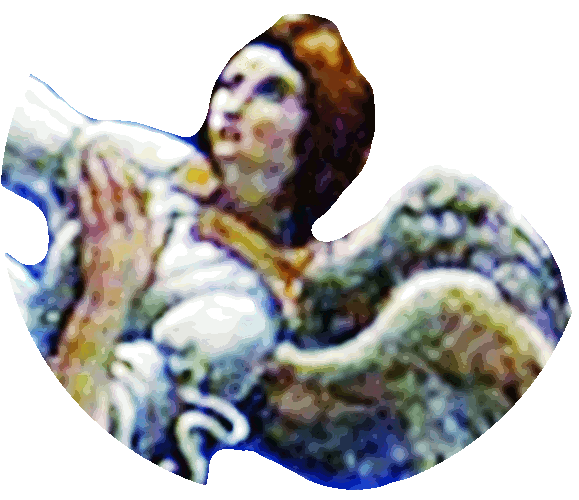 |
|
Old Testament and New Testament |
- This represents a symbolic encounter between the Old Law and the New
Covenant.
- It depicts a young man healed of leprosy by Jesus showing himself to the High Priest in front of the Temple as the elements of a purification sacrifice are presented.
|
The painting surprisingly sets the actual temptations of power, pride, and possession in the background, while in the foreground, Botticelli depicts a young man healed of leprosy by Jesus presenting himself to a high priest for purification.
(rockyruggiero.com)
|
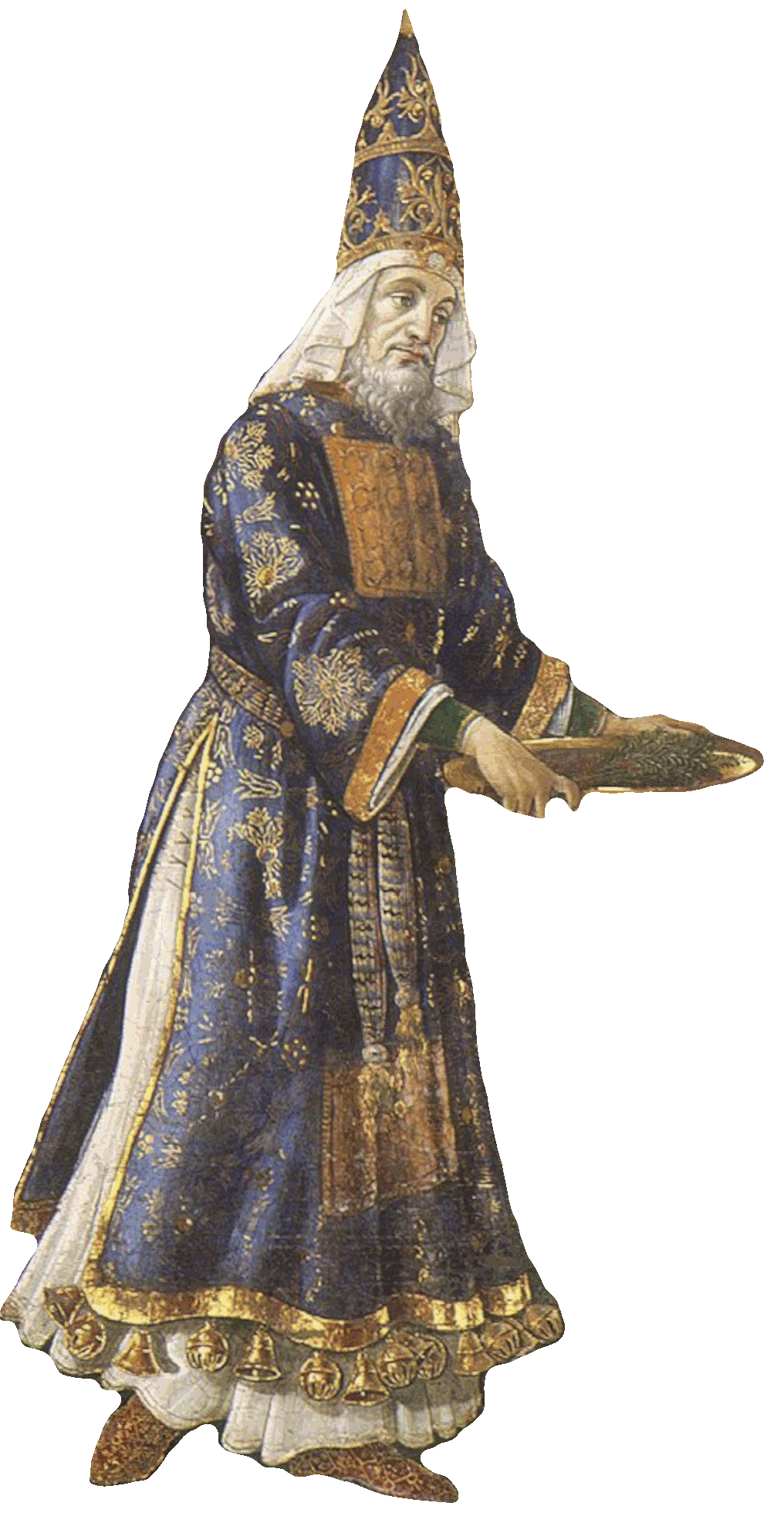
Nehemiah the Jewish law enforcer |
- Some say the central theme portrays a Jewish celebration taking place.
- Though it’s open for discussion, it is suggested that the man dressed in blue and gold is the Old Testament figure of Nehemiah, whose visage may
also resemble that of Pope Sixtus IV.
- Nehemiah stood for leadership and was known for continuing the traditional religious rites.
-
He worked to rebuild Jerusalem during the Second Temple period
and Pope Sixtus built the Sistine Chapel and Vatican.
|
Nehemiah represents Pope Sixtus, who was also a builder. The building in the middle ground of the picture resembles a church renovation project that Pope Sixtus worked on.
(historylink101.com)
|
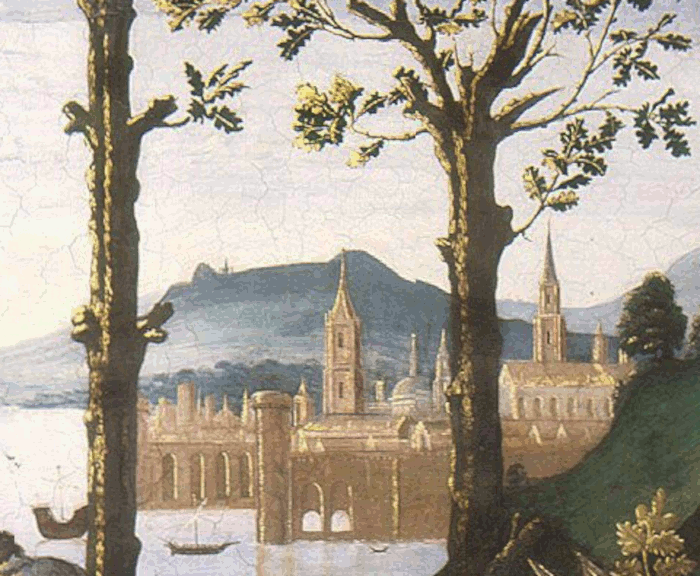
Satan had control over the kingdoms of the world |
- The Devil already had control over the kingdoms of the
world but was now ready to give everything to Christ in return for His allegiance.
- But the mere thought almost causes the Lord’s divine nature to shudder at such a concept and He replies sharply, “You shall worship the Lord your God and serve Him only.”
|
In each scenario, Christ resists the temptation that the
Devil offers, thus proving himself to be the perfect fulfillment of the Old Testament Law and the one true God.
(lifeofjesus2012.wordpress.com)
|
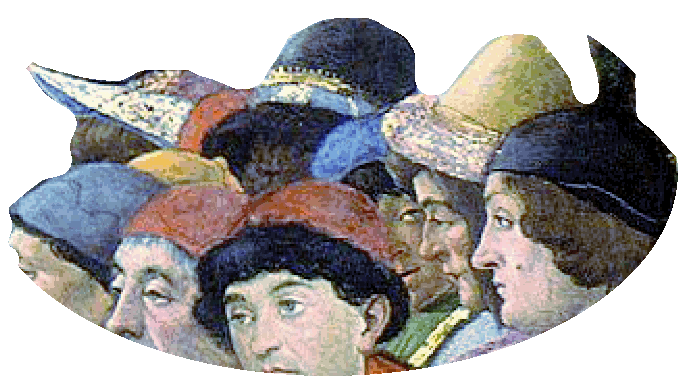
Myriad of temptations |
- Jesus’ experience in the desert helps us to see these common temptations that keep us from serving God effectively.
- The forces of evil come to us with a myriad of temptations, but all have the same three things at their core: lust of the eyes, lust of the flesh, and the pride of life.
|
You used to live in sin, just like the rest of the world, obeying the
Devil—the commander of the powers in the unseen world. He is the spirit at work in the hearts of those who refuse to obey God. (Ephesians
2:2)
|
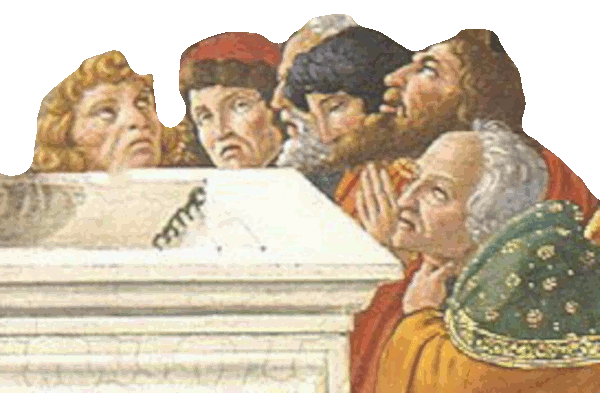
Truth |
- We can only recognize and combat these temptations by saturating our hearts and minds with the Truth.
- The armor of a Christian in the spiritual battle of life includes only one offensive weapon, the sword of the Spirit which is the Word of God.
|
Take the helmet of salvation and the sword of the Spirit, which is the word of God. (Ephesians
6:17)
|
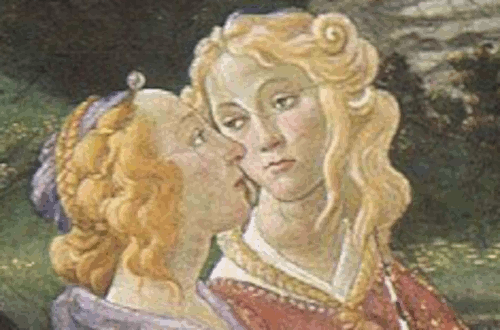
Familiar female subjects |
- The two female subjects in this image are painted in the same way as Botticelli’s painted female subjects in some of his other works.
- Botticelli incorporated the facial detail that he used so many times in his portraits on the left side of the image.
- On the right side he used actual people as subjects
incorporating a realistic style to their faces.
|
I went to the Garden of Love, And saw what I never
had seen: A Chapel was built in the midst, Where I
used to play on the green. And the gates of this
Chapel were shut, And Thou shalt not. writ over the
door; So I turn'd to the Garden of Love, That so many
sweet flowers bore. (William
Blake)
|
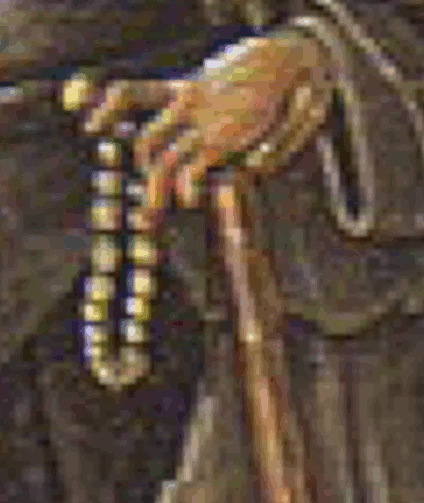
Rosary beads |
-
Pope Sixtus IV, a Franciscan who served from 1472-1484, encouraged the practice
of the rosary through papal bulls and indulgences.
- The rosary beads,
were a reference to the new rosary practices, which carried with them the promise of remission of punishment for confessed sins through indulgences.
|
This fashioning of the Devil as an active, practicing cleric was a popular motif in Temptation-themed art of the period. What it signifies is less clear; does the rosary indicate that, with Mary's intercession and Christ's grace, even the
Devil can be saved? Or is it a less benign fashioning, indicating that the
Devil is very clever and can disguise himself in the garb of the faithful? (diglib.library.vanderbilt.edu)
|
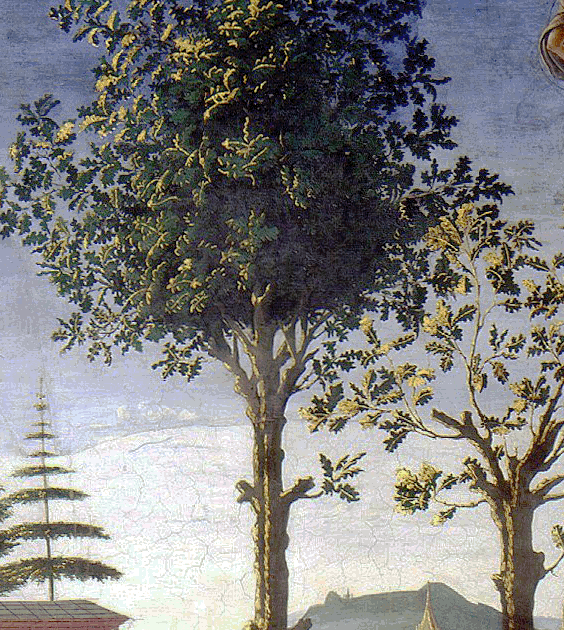
Fig trees |
- The barren and underdeveloped tree to the right is said to symbolize the man Guiliano della Rovere, who was elected pope but did not rise full potential in the position of papal power.
- The flourishing fig tree to the left is said to symbolize Pope Sixtus IV, whose reign proved him to be an older, more experienced pope.
|
Virtue? A fig! 'Tis in ourselves that we are thus or thus. (Shakespeare, Othello)
|
|
|

